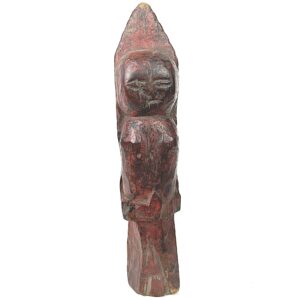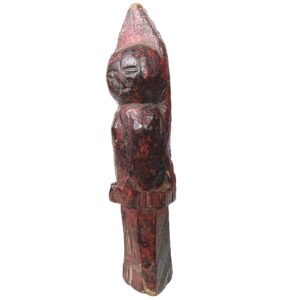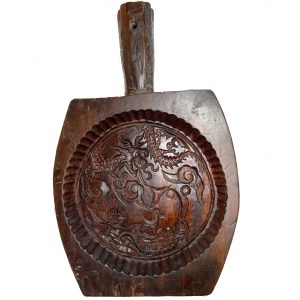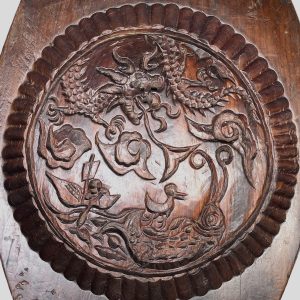Antique/Vintage Carved Hindu Devi Child’s Doll, India (3120FLK) $75
$75.00H: 9.5″ W: 2″ D: 1.2″ | FREE SHIPPING!
This antique hardwood local female deity from a provincial area in South India is a Devi, a positive female spirit and fertility deity. Hand crafted as a child’s toy, it was intentionally crudely carved without much detail and created to entertain and instill pride in the local community’s heritage and religion. It has a shiny patina from natural hand oil as it was handled daily for a century or so.



